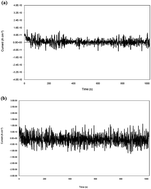Impact of curing on the corrosion performance of an eco-friendly silane sol–gel coating on 304L stainless steel
Abstract
In this study, the effect of curing on the structure and protective performance of an eco-friendly silane sol–gel coating on stainless steel 304L was investigated using electrochemical methods as well as surface analysis. The hybrid film consisting of tetraethoxysilane, methyltriethoxysilane and γ-glycidyloxypropyltrimethoxysilane was applied on the substrate via a sol–gel route. The electrochemical noise data indicated that the corrosion of stainless steel in a 3.5% sodium chloride solution is more effectively prevented through application of a coating cured at a higher temperature for a longer time. According to the Fourier transform infrared spectroscopy spectra, field emission scanning electron microscopy images and water contact angle analysis, the behavior was attributed to the formation of a highly crosslinked siloxane network by increasing the curing time and temperature. Consistent with the results of electrochemical noise measurements, electrochemical impedance spectroscopy data showed the significant effect of curing time and temperature on the hybrid silane film structure.


 Please wait while we load your content...
Please wait while we load your content...